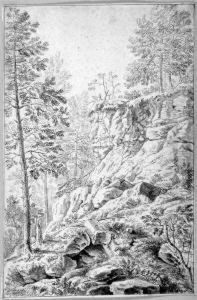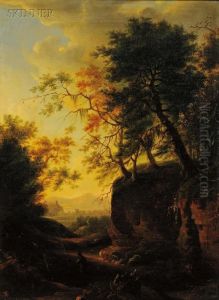Johann Franz Ermels Paintings
Johann Franz Ermels was a German painter, draftsman, and engraver, recognized for his contributions to the world of art during the Baroque period. Born in 1653, Ermels' early life and training are not extensively documented, but it is known that he developed his artistic skills during a time when the Baroque style was flourishing across Europe. This period was characterized by dramatic expression, rich colors, and intense light and shadow contrasts, elements that Ermels adeptly incorporated into his own works. Ermels is particularly noted for his landscape paintings, which often depicted idyllic scenes imbued with a serene and harmonious atmosphere. His ability to capture the delicate interplay of light and nature set him apart from his contemporaries and earned him recognition in his time. In addition to landscapes, Ermels also produced religious scenes and portraits, displaying a versatile talent that could adapt to various subjects and themes. Throughout his career, Johann Franz Ermels remained active in Germany, where he contributed to the cultural and artistic landscape of the late 17th century. Despite his achievements, Ermels' work was somewhat overshadowed by other luminaries of the Baroque period, and as a result, he is not as widely known today as some of his contemporaries. However, his paintings continue to be appreciated by art historians and collectors who recognize the skill and sensitivity with which he depicted both the natural world and human figures. Johann Franz Ermels passed away in 1693, leaving behind a body of work that, though not extensive, is valued for its contribution to the Baroque movement and its reflection of the artistic endeavors of the period.











